HOW TO
Apply a raster function template to symbolize classified data in a mosaic dataset or image service published from ArcMap
Summary
Symbolizing classified data is useful for data analysis. A raster function template can be saved from a layer's symbology and applied on a mosaic dataset or image service published from ArcMap. However, this results in the image being displayed with the RGB Composite renderer by default. This is a known limitation. Refer to BUG-000110154.
To symbolize classified data on a mosaic dataset or image service published from ArcMap, the raster function template created must include a function chain of an Attribute Table Function, Colormap Function and Remap Function.
Procedure
The workflow below describes how to create a raster function template with a function chain that includes an Attribute Table Function, Colormap Function and Remap Function to symbolize classified data in a mosaic dataset or image service published from ArcMap.
Note: The dataset used must be a 1-band mosaic dataset and integer type raster. Refer to ArcMap: Raster dataset properties and ArcMap: Int for more information. Publishing a map containing a mosaic dataset requires ArcGIS Image Server.
Add the mosaic dataset with an attribute table to the map, and generate a colormap file
- Add the mosaic dataset to the map.
- Ensure the added mosaic dataset has an attribute table. If there is no attribute table, add a raster attribute table to the dataset using the Build Raster Attribute Table tool. Refer to FAQ: Why is Open Attribute Table in ArcMap grayed out for some raster datasets? for steps to do this.
- Generate and save a colormap file according to the symbology of the classified mosaic dataset.
- Under Table Of Contents, in the Layers pane, right-click the dataset, and click Properties.
- In the Layer Properties window, click the Symbology tab.
- In the Show pane, click Unique Values.
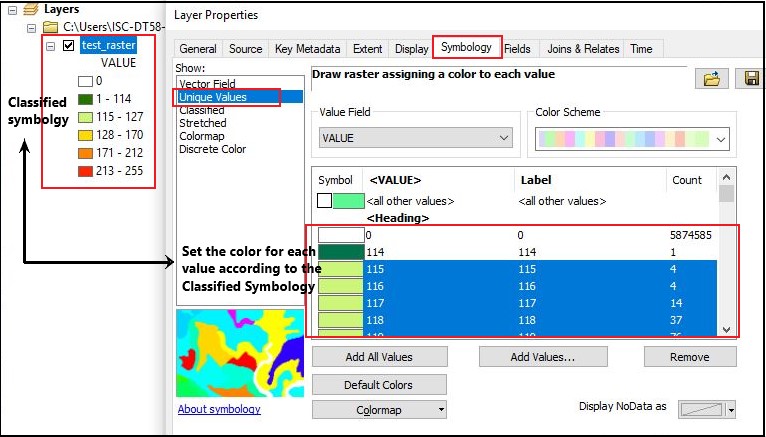
- Select the desired values. Hold the Shift key while selecting multiple values.
- Right-click the selected values. Click Properties for selected Colors, and select a desired color.
- After all the values are set with corresponding colors to the classified symbology, click Colormap > Export Colormap.
- In the Save As window, specify a File name for the colormap file, and select CLR Files (*.clr) for Save as type.
- Click Save.
Create a raster function template with a function chain that includes an Attribute Table Function, Colormap Function, and Remap Function
- Create a raster function template.
- Click Windows > Image Analysis.
- In the Image Analysis window, click the dataset to enable the Processing functionality.
- Under the Processing pane, click the Add Function
 icon.
icon.
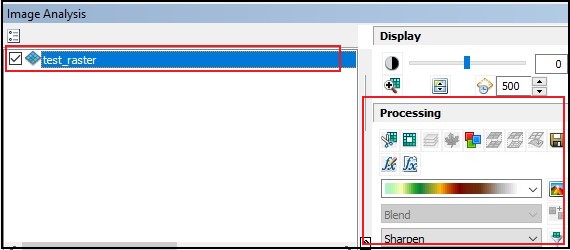
- Insert Attribute Table Function into the raster function template.
- In the Function Template Editor window, right-click the mosaic dataset, and click Insert Function > Attribute Table Function.
- In the Raster Function Properties window, click the Attribute Table tab.
- In Input Raster, click the Folder icon and select the mosaic dataset.
- In Attribute Table, insert the same mosaic dataset containing the attribute table.
- Click OK.
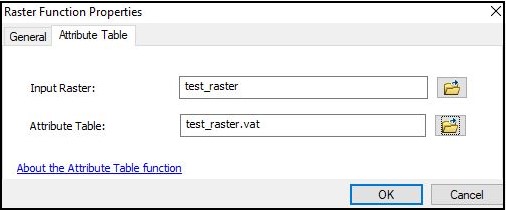
- Insert Colormap Function into the raster function template.
- In the Function Template Editor window, right-click the mosaic dataset, and click Insert Function > Colormap Function.
- In the Raster Function Properties window, click the Colormap tab.
- In Input Raster, click the Folder icon and select the mosaic dataset.
- In Colormap, click the Folder icon and insert the Colormap file generated through the steps in the section above.
- Click OK.
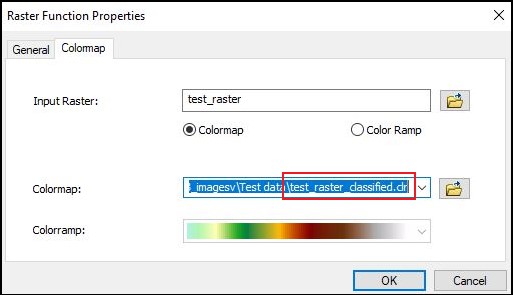
- Insert Remap Function into the raster function template.
- In the Function Template Editor window, right-click the mosaic dataset, and click Insert Function > Remap Function.
- In the Raster Function Properties window, click the Remap tab.
- In Input Raster, click the Folder icon and select the mosaic dataset.
- In Remap Definition, select List.
- Edit the table under Remap Definition according to the values of the classified symbology.
- Click OK.
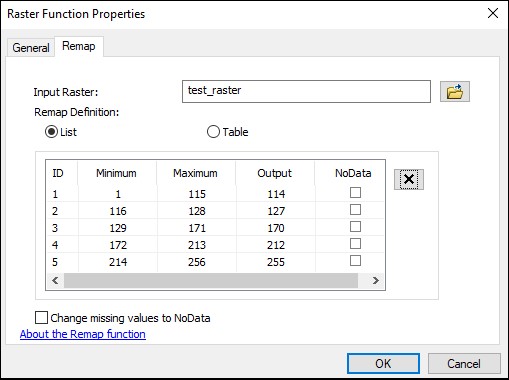
- Click OK in the Function Template Editor window to apply the raster function.
Export and save the raster function template file
- Export the raster function template that includes the full function chain created in the previous steps.
- Click Windows > Image Analysis.
- In the Image Analysis window, click the resulting mosaic dataset.
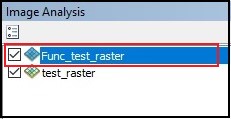
- Under the Processing pane, click the Add Function
 icon.
icon. - Right-click the item ID, and click Export As Template.
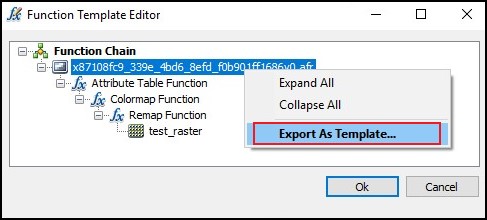
- Save the raster function template file.
- In the Function Template Editor - Untitled window, click File > Save As.
- In the Save As window, specify a File name for the raster function template and ensure Raster Function Template XML File is selected for Save as type.
- Click Save.
Apply the raster function template to the mosaic dataset in the map or when publishing the mosaic dataset as an image service
- Apply raster function template to the mosaic dataset in the map.
- In the Catalog window, right-click the mosaic dataset, and click Properties.
- In the Mosaic Dataset Properties window, click the Processing Templates tab, and click the Folder
 icon.
icon.
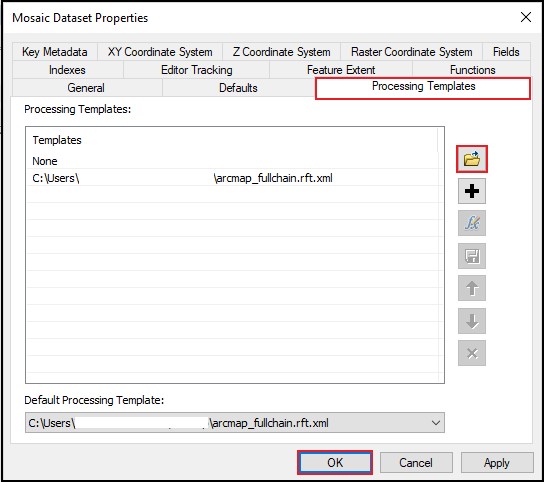
- In the Select Raster Function Template window, select the created raster function template file and ensure RFT Files is selected for Files of type.
- Click Open.
- In the Mosaic Dataset Properties window, click OK.
- Alternatively, apply the template to the mosaic dataset when publishing it as an image service.
- In the Catalog window, right-click the mosaic dataset, and click Share As Image Service.
- In the left pane of the Service Editor window, click Parameters > Function.
- In the Function page, next to Manage raster function templates, click Manage.
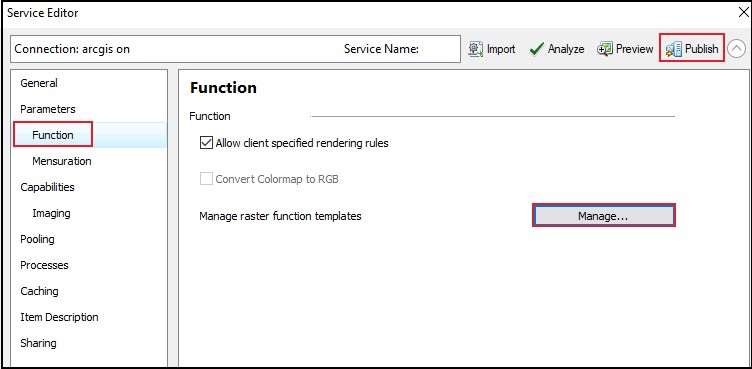
- In the Manage Raster Function Templates window, click the Add File
 icon.
icon.
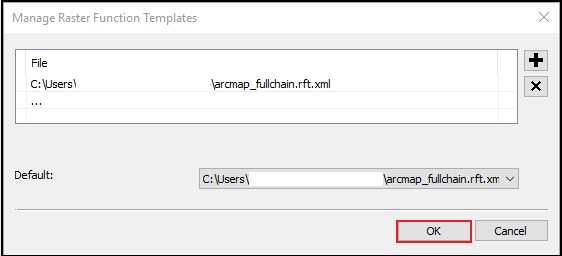
- In the Add File window, select the created raster function template file and click Open.
- In the Default drop-down menu, select the same template, and click OK.
- In the Service Editor window, click Publish.
Article ID: 000021073
- ArcMap
- ArcGIS Server
Get help from ArcGIS experts
Start chatting now

